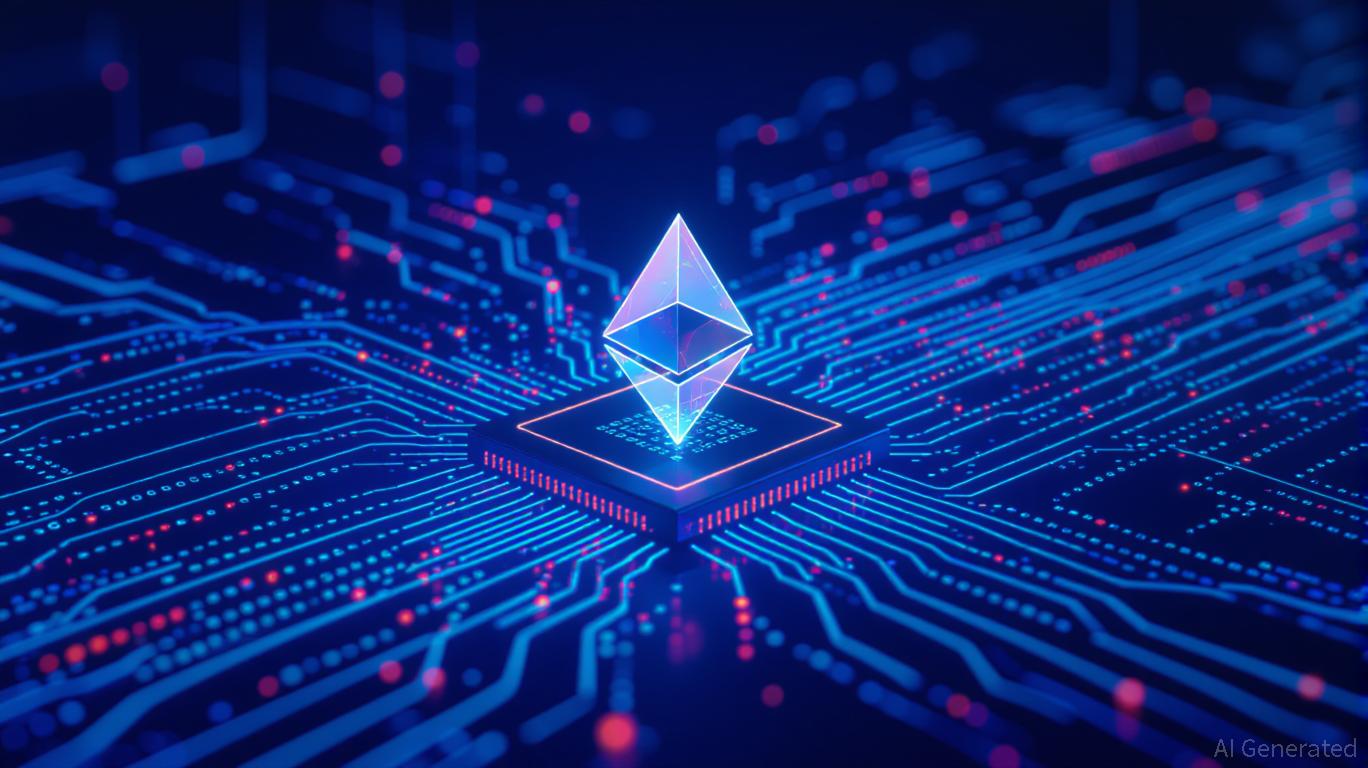Vitalik Buterin's Breakthrough in ZK Technology: Ushering in a New Age of Privacy and Blockchain Scalability
- Vitalik Buterin drives Ethereum's ZK innovations to solve scalability and privacy challenges, positioning ZK as crypto's next growth pillar. - Modexp precompile updates and GKR protocol reduce proof costs 50x-15x, enabling ZK-rollups to process 43,000 TPS with near-zero fees. - ZK integration with MPC/FHE/TEE expands use cases beyond DeFi, with ZK-FHE hybrids targeting enterprise adoption in healthcare and finance . - ZK Layer 2 market projected to grow at 60.7% CAGR to $90B by 2031, driven by institutio
Overcoming Scalability Limits: Modexp Precompile and GKR Protocol
The traditional modexp precompile on Ethereum—a cryptographic function essential for ZK proofs—has long posed difficulties for developers.
Supporting this initiative is the GKR (Goldwasser-Kilian-Rothblum) protocol, which Buterin introduced in late 2025. This recursive proof aggregation technique

Expanding Beyond ZK: Merging Cryptographic Innovations
Buterin’s ambitions reach further than ZK proofs alone. He has strategically promoted the combination of ZK with multi-party computation (MPC), fully homomorphic encryption (FHE), and trusted execution environments (TEE) to close privacy gaps in use cases such as voting and confidential state queries.
Market Momentum: ZK’s Rapid Expansion
The case for investing in ZK technology is further strengthened by current market trends.
This surge is fueled by two main factors: increased institutional participation and Ethereum’s “Lean Ethereum” improvements. As ZK-rollups lessen the computational burden on Ethereum’s mainnet, they free up capacity for further enhancements, creating a positive feedback loop of efficiency. At the same time, more businesses and government agencies are turning to ZK-based solutions for data privacy, broadening the technology’s potential market.
Potential Risks and Key Points
Despite the promising outlook, investors should proceed with care. For example, the proposed modexp precompile update might encounter pushback from miners or developers who benefit from the current gas structure. Moreover, the complexity of ZK—both technically and in terms of user experience—could slow adoption. Nevertheless, Buterin’s history of balancing innovation with practical solutions suggests these issues will be addressed over time.
Final Thoughts: ZK as a Core Investment Theme
Vitalik Buterin’s work on ZK is more than a series of incremental upgrades—it marks a fundamental shift in what blockchain technology can achieve. By solving challenges around scalability, privacy, and interoperability, these developments are making ZK a foundational layer for the next era of crypto. Investors should prioritize projects with robust technical foundations and clear real-world applications, such as ZKsync, StarkNet, and new ZK-FHE hybrids. As these innovations become more widely recognized by the market, early participants are likely to see substantial returns.
Disclaimer: The content of this article solely reflects the author's opinion and does not represent the platform in any capacity. This article is not intended to serve as a reference for making investment decisions.
You may also like
BCH drops 2.06% due to sluggish loan expansion and a decline in institutional ownership
- Banco de Chile's stock (BCH) has declined 5.24% in 24 hours, 9.81% in 30 days, due to weak loan growth and reduced institutional holdings. - Earnings slowdown stems from lower inflation-adjusted income and stagnant loan growth in core mortgage/consumer credit segments. - Analysts maintain neutral stance with $36.93 price target, but institutional ownership fell 3.53% amid bearish put/call ratio of 4.11. - Backtest hypothesis links institutional sell-offs and below-expected earnings to statistically signi
Bitcoin News Today: Bitcoin’s HODL barrier encounters a challenge reminiscent of FTX as liquidations reach $1.1 billion
- Bitcoin tests $95k HODL wall amid $1.1B liquidations, echoing 2022 FTX crash volatility with $44.29M largest single loss. - Technical indicators show oversold RSI and potential death cross rebound, with analysts predicting $95k-$145k range for near-term reversal. - ETF flows reveal $524M Bitcoin inflow vs $1.07B Ethereum outflow, highlighting shifting institutional sentiment amid macro uncertainty. - U.S. regulatory progress through GENIUS/CLARITY Acts aims to clarify SEC-CFTC oversight, potentially boos

XRP News Today: XRP ETF Breaks Inflow Records While Bitcoin ETFs See $866M in Outflows
- Canary Capital's XRPC ETF shattered 2025 records with $245M inflows and $58.6M trading volume on debut, outperforming all other ETFs. - SEC-approved in-kind creation model enabled XRP token exchanges for shares, driving inflows exceeding real-time trading data. - XRPC surpassed Bitcoin ETFs like BlackRock's IBIT , fueled by XRP's retail following and post-Ripple regulatory wins. - XRP stabilized near $2.30 despite 8% 24-hour drop, while Bitcoin ETFs saw $866M outflows amid broader market weakness. - Regu
Ethereum Updates: India's Web3 Expansion—Digital Advertising, E-Commerce, and Blockchain Unite at IBW2025
- Bengaluru hosts IBW2025, India's largest Web3 conference, reinforcing its global digital innovation hub status. - India's digital ads show resilience: desktop web viewability (66%) exceeds global (63%) and APAC (61%) averages. - Meesho's asset-light e-commerce model targets 20% CAGR growth, aligning with Web3's decentralized infrastructure principles. - Intchains expands into Ethereum/PoS platforms, leveraging ETH holdings for yield while Kneat.com reports 33% YoY revenue growth. - Converging digital ads
